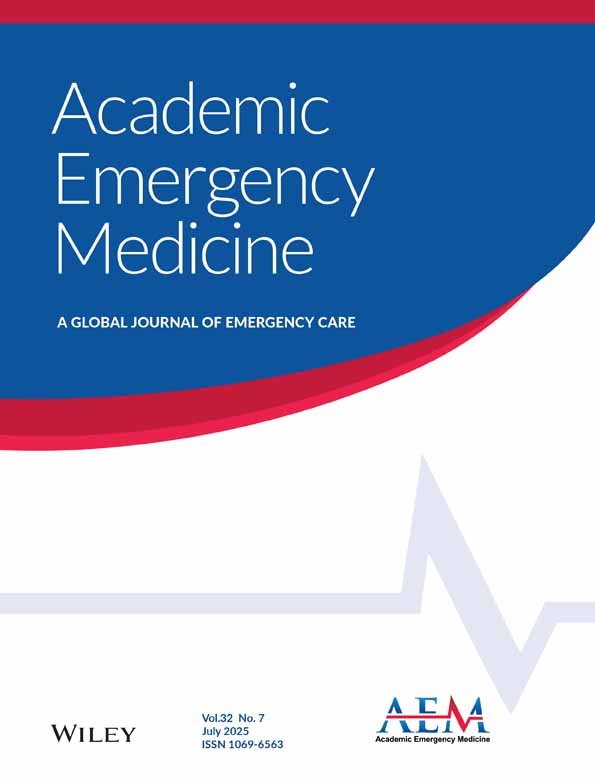Alcohol withdrawal syndrome presentations to emergency departments in the United States from 2015 to 2023
Supervising Editor: Christopher R. Carpenter
Abstract
Introduction
Alcohol withdrawal syndrome (AWS) is a common condition prompting emergency department (ED) presentation. However, there are limited recent, large-scale, robust data available on the incidence, admission, and medical treatment of AWS in the ED.
Methods
This was a retrospective cohort study of ED presentations for AWS from January 1, 2016, to December 31, 2023, using Epic Cosmos. All ED visits with ICD-10 codes corresponding to AWS were included. Outcomes included percentage of total ED visits, percentage admitted, length of stay (LOS), and medications administered. Binary logistic regression models were used to measure the relationship between time and dependent variables and reported as odds ratios (ORs) with 95% confidence intervals (CIs).
Results
Out of 242,804,798 ED encounters, 670,430 (0.28%) visits were due to AWS with a rise over time (OR 1.074, 95% CI 1.072–1.075). Of these, 386,618 (57.7%) were admitted (46.2% inpatient floor, 11.5% ICU). Median (IQR) hospital LOS was 3 (2–5) days and median (IQR) ICU LOS was 2 (1–4) days. Among all ED patients, benzodiazepine use declined over time (84.9% to 77.1%; OR 0.917, 95% CI 0.914–0.920), while phenobarbital (4.0% to 21.2%; OR 1.255, 95% CI 1.250–1.259) and gabapentin (11.0% to 16.3%; OR 1.054, 95% CI 1.050–1.057) use increased. Oral and intravenous (IV) benzodiazepines were common (63.1% and 66.6%, respectively). Among IV benzodiazepines, lorazepam was most common (59.9%). Among those discharged from the ED, 29.0% were prescribed benzodiazepines (chlordiazepoxide 21.1%, lorazepam 5.5%, diazepam 1.9%). Anticraving medications, such as gabapentin (1.5%), naltrexone (0.4%), and acamprosate (<0.1%) were uncommon, but rising over time.
Conclusions
AWS represents a common reason for ED presentation, with most patients being admitted. We identified a rising incidence with a shift in management to include agents such as phenobarbital and gabapentin. These findings provide important evidence on current trends in AWS to inform health policy and knowledge translation efforts as well as emphasizing the need for ongoing research and evaluation of clinical practices to optimize outcomes for patients with AWS.
CONFLICT OF INTEREST STATEMENT
The authors declare no conflicts of interest.
Open Research
DATA AVAILABILITY STATEMENT
The data that support the findings of this study are available from the corresponding author upon reasonable request.




